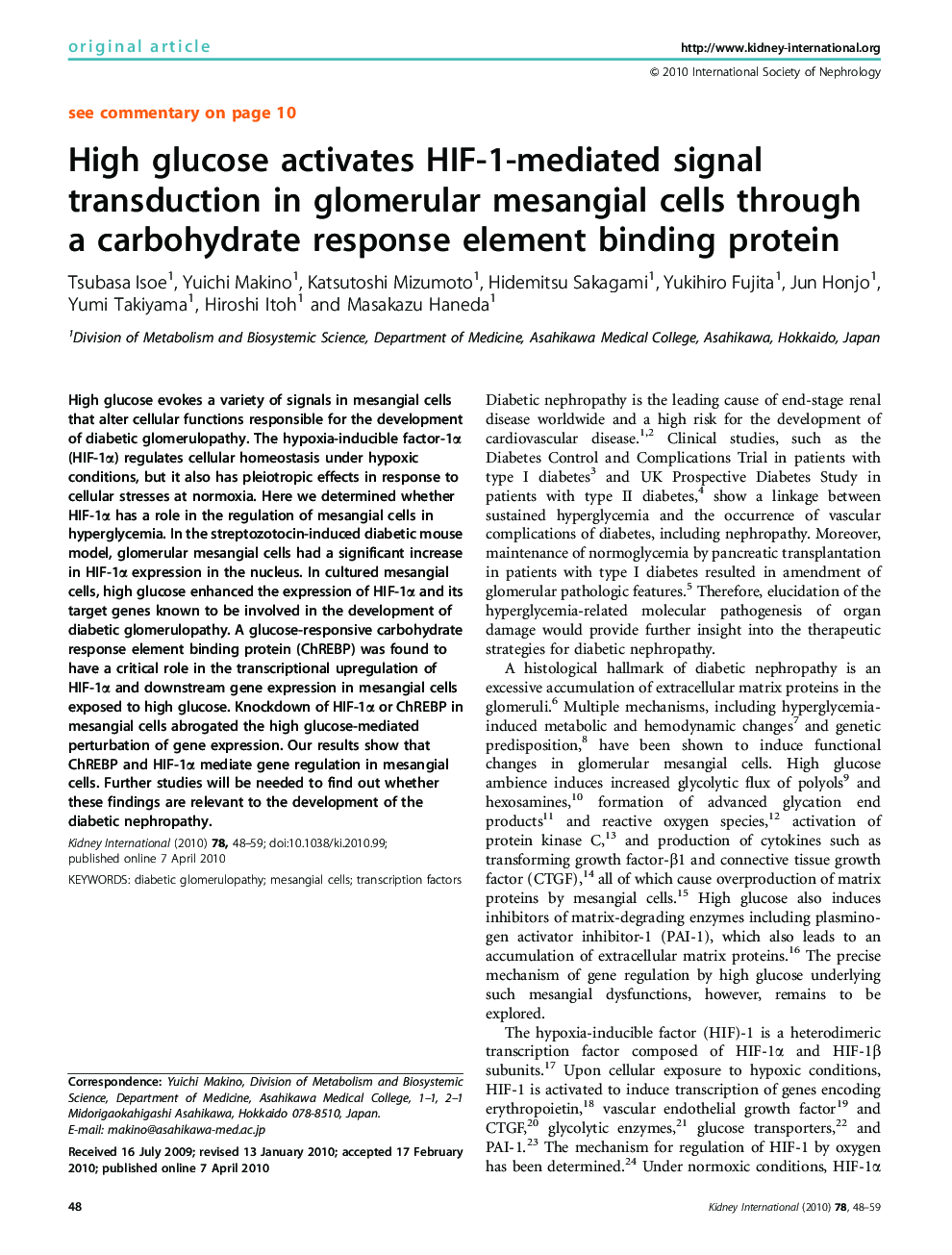| Article ID | Journal | Published Year | Pages | File Type |
|---|---|---|---|---|
| 3886845 | Kidney International | 2010 | 12 Pages |
High glucose evokes a variety of signals in mesangial cells that alter cellular functions responsible for the development of diabetic glomerulopathy. The hypoxia-inducible factor-1α (HIF-1α) regulates cellular homeostasis under hypoxic conditions, but it also has pleiotropic effects in response to cellular stresses at normoxia. Here we determined whether HIF-1α has a role in the regulation of mesangial cells in hyperglycemia. In the streptozotocin-induced diabetic mouse model, glomerular mesangial cells had a significant increase in HIF-1α expression in the nucleus. In cultured mesangial cells, high glucose enhanced the expression of HIF-1α and its target genes known to be involved in the development of diabetic glomerulopathy. A glucose-responsive carbohydrate response element binding protein (ChREBP) was found to have a critical role in the transcriptional upregulation of HIF-1α and downstream gene expression in mesangial cells exposed to high glucose. Knockdown of HIF-1α or ChREBP in mesangial cells abrogated the high glucose-mediated perturbation of gene expression. Our results show that ChREBP and HIF-1α mediate gene regulation in mesangial cells. Further studies will be needed to find out whether these findings are relevant to the development of the diabetic nephropathy.
